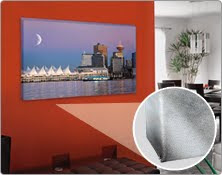
Travel opens a whole world of photographic opportunities for those of us who love to take pictures. Your travel photos can be dynamic, meaningful, and visually stunning with a little preparation before your trip and some new perspectives while you are on the road.
Your Best Travel Photos
Lens Filters: Finding the Right Wavelength
Photography is the art of capturing light. The simplest ways to control the amount of light are right on your mode dial: adjusting shutter speed and aperture size. To modulate the quality of light, a filter is a straightforward, relatively inexpensive way to add drama to your images.
What is light?
To understand how filters change your image, we must go back to basics. Visible light moves in waves of electromagnetic radiation, similar to waves in the water. These waves have three properties that are particularly important to the photographer:
- Waves have amplitude: the larger the wave, the brighter the light.
- Waves have frequency that determines the colour of the light: faster waves appear as blue and violet while slower waves appear red and orange.
- Waves have direction: we refer to this as polarization.
Each type of lens filter changes a property of light. Some block out a portion of all light, reducing the amplitude of the waves. Some block out certain frequencies, which changes the colour composition of the image. Some polarize the light, blocking out waves that are moving in certain directions. Each type of filter produces a unique effect that can transform the final image into a dramatic, professional-looking photograph.
Neutral Density Filters: Controlling the light
Neutral density filters reduce the amount of light passing through the camera lens without changing the colour composition. They are especially useful in bright light conditions to help prevent overexposure. Professional photographers often use neutral density filters to manipulate other camera settings for dramatic effects. For instance, a neutral density filter can allow for a wider aperture setting, which lets the photographer emphasize the subject while the foreground and background are softly out of focus. The photographer could also slow the shutter speed down and, with a tripod, capture the blur of motion while the landscape remains still and sharp.
Graduated Filter: Balancing light for dramatic landscapes
Many scenes, particularly those outdoors, have an unbalanced light intensity: the sky is bright, but the foreground appears dark. A graduated filter blocks out more light waves on one side of the lens, gradually allowing more light toward the other side. Imagine a bright sky with a darker foreground—to properly expose the sky, the foreground will be too dark, but if you expose for the foreground, you overexpose the sky. By positioning the filter with the stronger side up, you can capture more sky detail without underexposing the foreground. The graduated filter, in effect, allows you to manipulate the amount of light in different zones of the photograph.
UV Filter: Blocking out the haze
Light waves can move at different frequencies, some slowly, others fast. These frequencies appear as different colours: at one end of the spectrum are the slow red waves and at the other, quick violet waves. Moving even faster than violet light waves are ultraviolet waves (UV light), virtually invisible to the human eye.
Unlike the human eye, cameras are sensitive to UV light. Think of one of your sunny day landscape shots: when you took the picture, you saw a crystal clear, almost limitless view. The photograph turned out hazy and bluish. This is ultraviolet light, which often shows up on images as a bluish cast in shots from high altitudes, long distances, and over water. UV filters block out these waves, reducing excessive blue, and increasing colour intensity and image clarity.
Sky filter: Colour correction
A sky filter is a type of UV filter with a pink tint for added warmth. As with a UV filter, the sky filter is especially helpful when shooting outdoors, blocking out UV haze for better image clarity. The added tint helps with colour balance, especially skin tones.
Polarizing filters
In bright situations, strong light waves reflect off surfaces, sending waves in all sorts of directions. In photographs, this appears as a whitish glare. Polarizers block out these errant wavelengths: colours appear deeper, blue skies are deeper and more dramatic. This filter also removes glare from non-metallic surfaces, such as windows and water.
Protection and Peace of Mind
UV, sky, and polarizing filters can significantly improve the quality of your photographs, but there is an important side benefit. The filters screw on over your lens, protecting the surface from scratches. Since most filters are a fraction of the cost of a lens, a filter helps protect your photography investment.
For those who want to protect their lens without the added filtering properties, clear lens protectors are also available.
To learn more about lens filters and how they can transform your photographs, bring your camera into the London Drugs Camera Department. Our camera specialists can help you find the right filter for your camera.
Bright Lights, Better Photos
Better Family Photos
Art Through the Lens, Art on the Walls
Macros: The Art of Extreme Close-Up
Viruses – Our Tech Pros Can Help!
Almost every day we are warned about a virus making the rounds. Although it may seem that they spread independently from computer to computer, in fact they do not… they need people to spread, just like a cold. Viruses are like sneezes, except that the sneezes are emails. Innocently attached to an e-mail message, a virus does its damage by delivering its payload – a malicious piece of code – once it has reached the destination computer.

Here’s a quick primer on the different types of viruses, how they typically propagate, and what kind of damage they can do.
Simple Virus
This type of virus works by attaching itself to a program file, and is activated when you launch that program. The virus then takes control of your computer, attaches itself to another program file, and the cycle continues.
Encrypted Virus
Every virus is a piece of code, or a specific sequence of bytes. This sequence is known as a signature, and in an encrypted virus, this signature is scrambled, making it difficult for virus scanning software to detect.
Polymorphic Virus
As with the encrypted virus, creators of polymorphic viruses encrypt the virus’ signature. What makes this type of virus so difficult to detect, however, is that the decryption routine used to unscramble the encryption is also encrypted.
Macro Virus
Almost 75% of viruses reported today are macro viruses. They are easy to write and generally spread via programs that make use of macros, such as MS Word.
Trojan Horse
Like the legendary Trojan Horse of Greek mythology, this type of virus is actually a nasty program disguised as a benign program, like a screensaver. It does its damage when it is executed, typically stealing passwords or spreading viruses.
Worms
Unlike a true virus, which needs users (and usually their e-mail) to spread from computer to computer, a worm is self-propagating. Because of this, a worm can spread to hundreds of thousands of computers in an incredibly short time, doing substantial damage as it does. Not only can a worm attach itself to every email address in your MS Outlook address book, but it can also stick to certain types of files on your computer which, when opened, will start the whole propagation process again.
Our London Drugs Tech Pros Can Help!
Every London Drugs Computer Department has a CompTIA Certified A+ technician on hand to provide a full range of services to our customers.
Installation of:
- Video cards
- Sound cards
- Hard Drives
- Installing Floppy Drives
- Network Cards
- High Speed Internet Modems
- Memory – RAM
- CD Burners
- CD Players
- DVD Players
Also:
- Transferring your data between computers
- Troubleshooting
- Optimizing your system for peak performance
- …and much more!
Our London Drugs Tech Pros can service any make or model of computer.
Please visit our store locator to find a LD Tech Pro near you.





